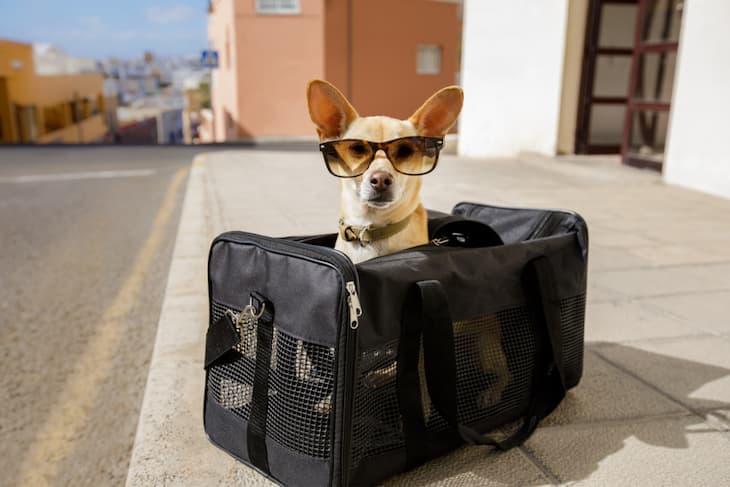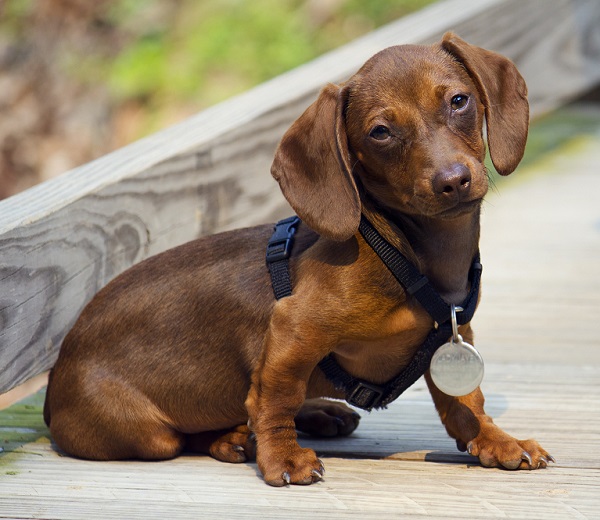Whether you’re planning a family vacation or a cross-country road trip, there’s no need to leave your furry best friend behind. As a responsible pet owner, it’s important to think about the comfort and safety of your beloved canine companion while on the move. Just as you prioritize packing the essentials for yourself, it is equally important to do the same for your dog. Remember to include their cherished toys, food, water, bed, and other necessities. Another item you need to pay special attention to is the carrier. When it comes to transporting your dog, it is crucial to choose the best option that caters to both your pet’s needs and the specific mode of travel.
What to Consider When Buying a Dog Carrier?
Dog Size
The size of your dog is an important factor to consider when buying a crate. For larger dogs, you will need bigger space, while for puppies, a puppy dog carrier will effectively meet their needs.
Before purchasing the crate, ensure to measure your pet’s height and length. The fit must be snug, as excessive space can lead to heightened impact injuries in the event of a crash. However, you also don’t want it too close-fitting because they won’t be able to move and get comfortable. The crate should allow your pet to stand up, turn around, and lie down with ease, ensuring their comfort throughout the journey.

If you can, try out different bags of various sizes in a store to see in which one your dog feels most comfortable. However, some kennels are not available to purchase in stores, which is why testing may not be an option. In this case, provide your dog’s measurements to the manufacturer and collaborate with them to determine the most suitable fit. When choosing a size, also consider your dog’s weight and select the larger option if they fall between sizes.
Material and Quality
You can choose between two types of materials for dog carriers: hard-sided and soft-sided. If you’re seeking a sturdier and more resilient choice, go for a hard-sided dog travel crate. Typically made of wire or plastic, they provide durability.
Soft-sided, on the other hand, are preferred by many pet owners for valid reasons. They offer greater comfort and are the preferred choice for storage and travel.
When it comes to your pet’s transportation, it’s important to prioritize quality over cost. After all, its main purpose is to ensure your dog’s safety and comfort. Whether it’s a hard or soft-sided make sure it’s well-built and has proper supports to avoid collapsing on your dog. Also, look for carriers that have secure doors or latches.
The Dog’s Temperament
A relaxed dog might be perfectly content cuddling up in a cozy folding crate. On the other hand, if your pet tends to be restless, a bag with a built-in leash to secure your dog is a good pick. A top-zipping option would also make the loading process a lot smoother. In addition, think about whether your dog would feel more relaxed with more or less visibility. Some dogs enjoy the openness of a carrier with mostly mesh, while others prefer a more enclosed space. If your dog prefers privacy, look for a carrier with zip-up windows.
Ventilation
Choose a travel kennel with good ventilation to allow airflow. Older or overweight dogs can overheat, so be sure that their ride is made of breathable material like mesh to prevent heat from getting trapped inside.
Storage
While not the most critical aspect, it’s still worth considering the storage capacity of your carrier. Opt for a product that offers additional side pockets and pouches. This is useful for storing the items you’ll need both before your flight and after arrival, such as dog treats, a collar or a harness, and waste bags.
What Makes Carriers Designed for Air Travel Different from Those for Car Travel?
When transporting your dog, you’ll typically choose between two main modes of travel: planes and cars. Each option has its unique factors to consider, which is why you should select the perfect transportation crate to cater to your specific travel needs.
The main difference between the two is that when travelling by plane there are certain rules and regulations you need to follow. The tricky part is that each airline has its policies when it comes to pet travel. Checking the policies of pet-friendly airlines like Qantas and Virgin can be beneficial in planning your travel arrangements.

If you plan to fly with a small dog, it’s recommended to consider soft-sided puppy dog carriers that meet the airline’s under-seat specifications. For larger dog breeds travelling in cargo, prioritize sturdy hard-sided carriers that offer plenty of ventilation and stability.
Also, the size and weight of the carrier must comply with the rules of the airline you’re flying with. A collapsible crate is versatile and easy to transport, making it ideal for many situations. It works well for dogs that are travelling in a car, whereas for plane travel, a non-collapsible crate securely assembled is necessary for safety.
For car travel, carriers made out of metal, plastic, wood, and netting work for most dogs. However, for plane travel, you need to have an airline approved dog crate made of hard plastic, metal, or wood with a solid top. For example, Vebo is an Australian brand that is approved for air travel.
How to Prepare for Travel?
Along with the previously mentioned factors, you should also consider a few other elements that will contribute to your pet’s positive experience and make your travel journey even more pleasant.
Visit a Vet
Before finalizing your travel plans, visit a vet for a check-up to ensure your pet’s vaccinations are up to date and that they are not suffering from any illnesses that could be worsened by heat or stress.
Crate Training
Avoid waiting until the last minute to purchase a crate for your pet. To ensure your pet’s comfort during travel, it is advisable to get the crate several weeks before your trip. This will allow your pet to acclimate to the crate and feel secure inside. Avoid using the crate as a form of punishment, as it should be associated with a positive and safe space for your pet.
Labelling and Assembly
Properly assemble the crate following airline guidelines. It is important to use metal hardware instead of plastic. Label the crate correctly and prominently display live animal stickers on the outside. Seek assistance from a pet travel agent if needed.
Provide Food and Water
For safety reasons, it is important to attach the food and water bowls to the door of the crate, rather than keeping them loose inside. This prevents any potential risks when the crate is being moved.
Conclusion
Buying the ideal dog carrier depends on the specific travel needs and the safety and comfort of your pet. Consider airline regulations for plane travel and secure, well-ventilated carriers for car travel. By prioritizing your dog’s well-being, you can make a choice that ensures a stress-free and memorable travel experience.



















